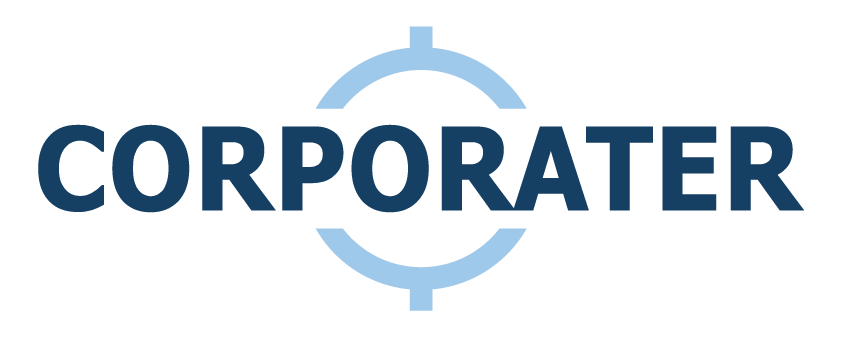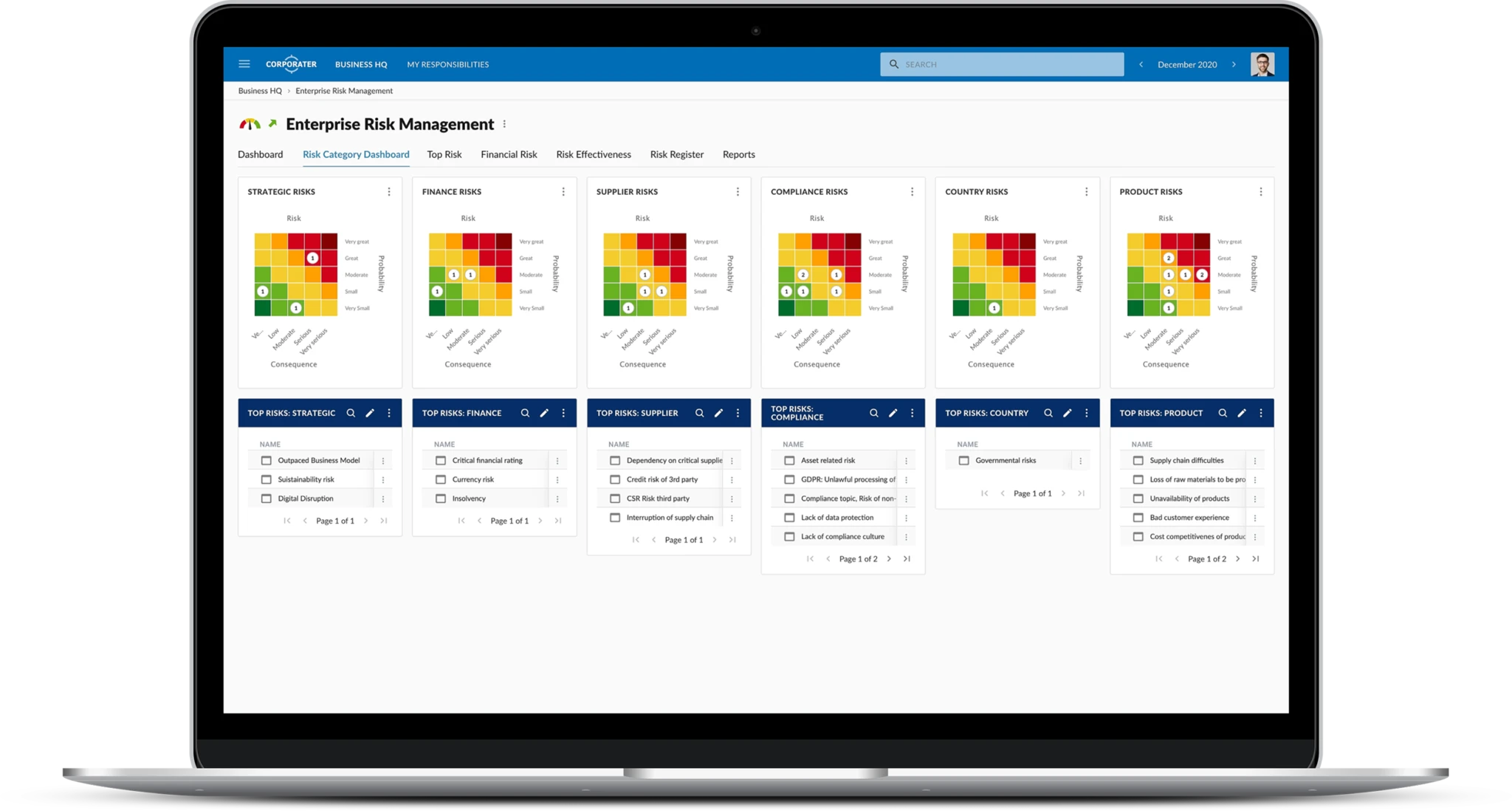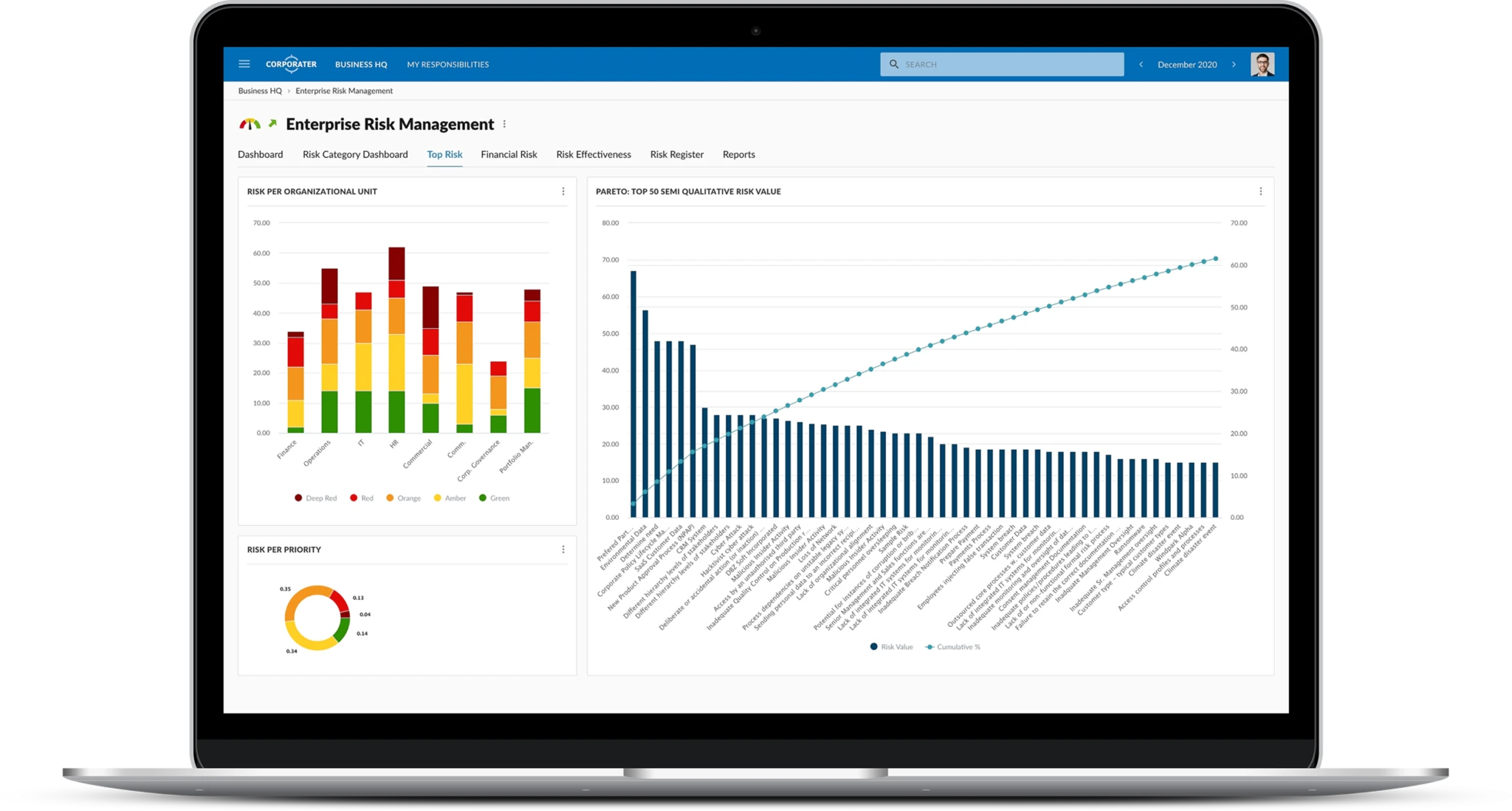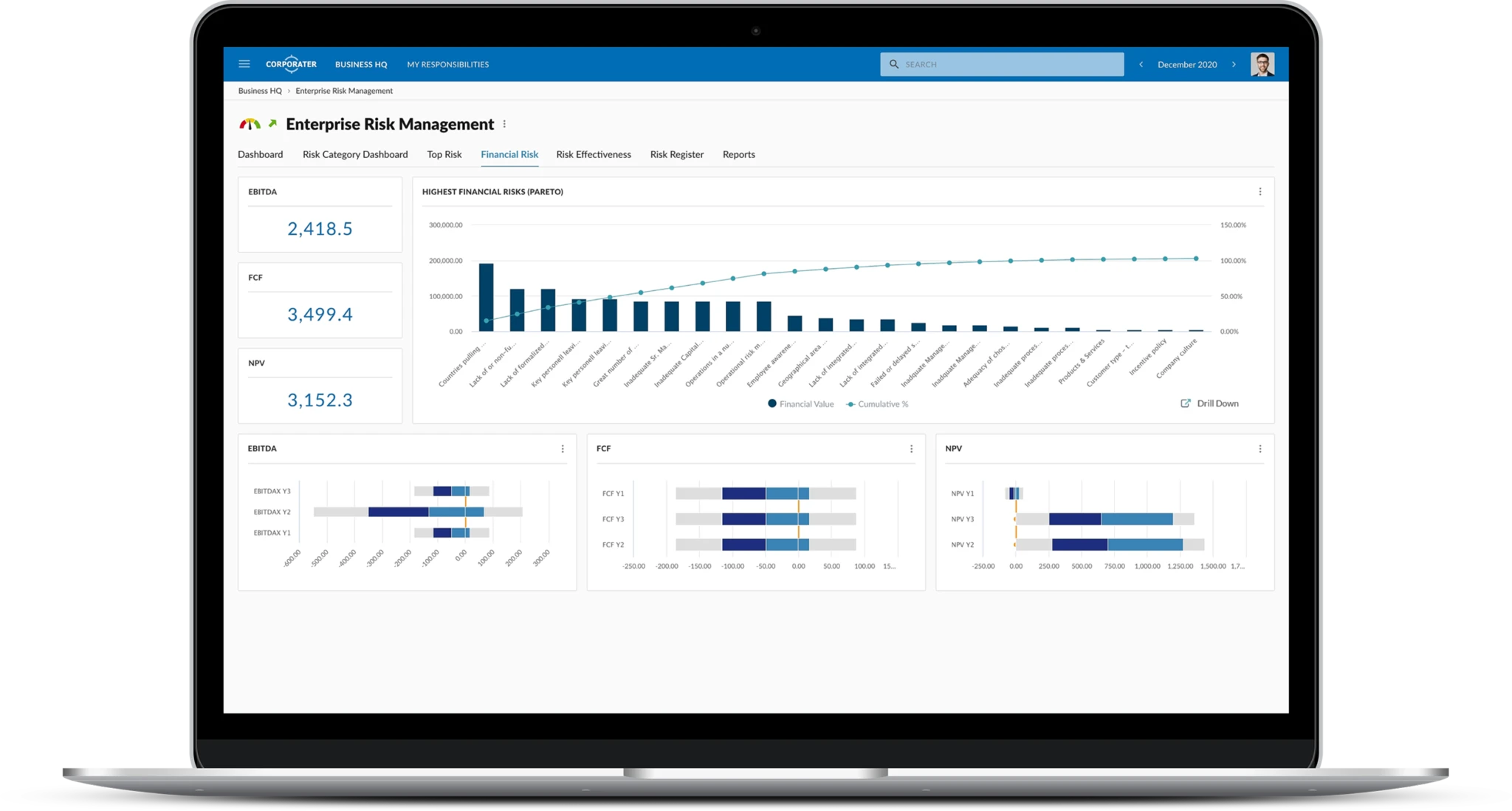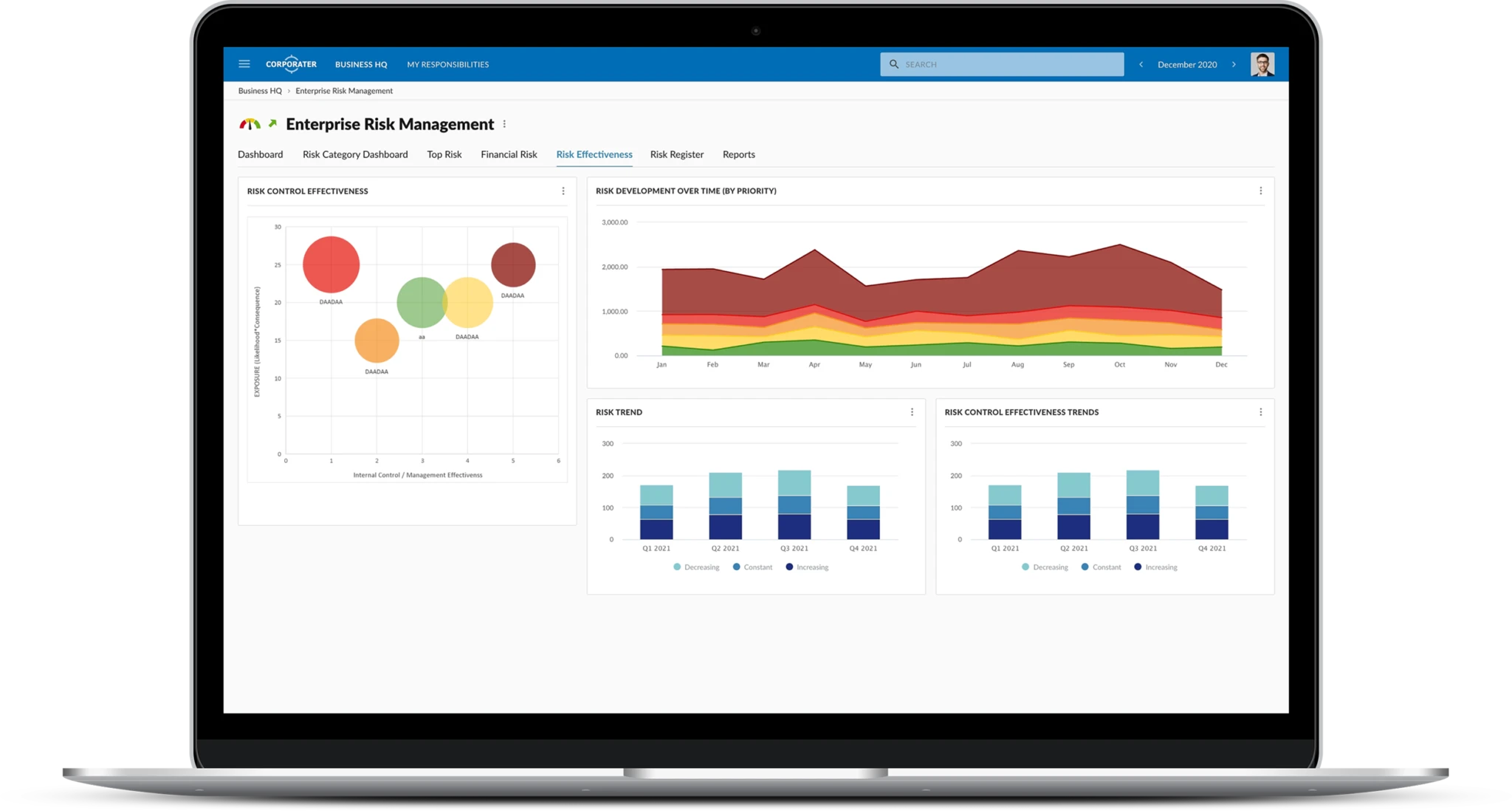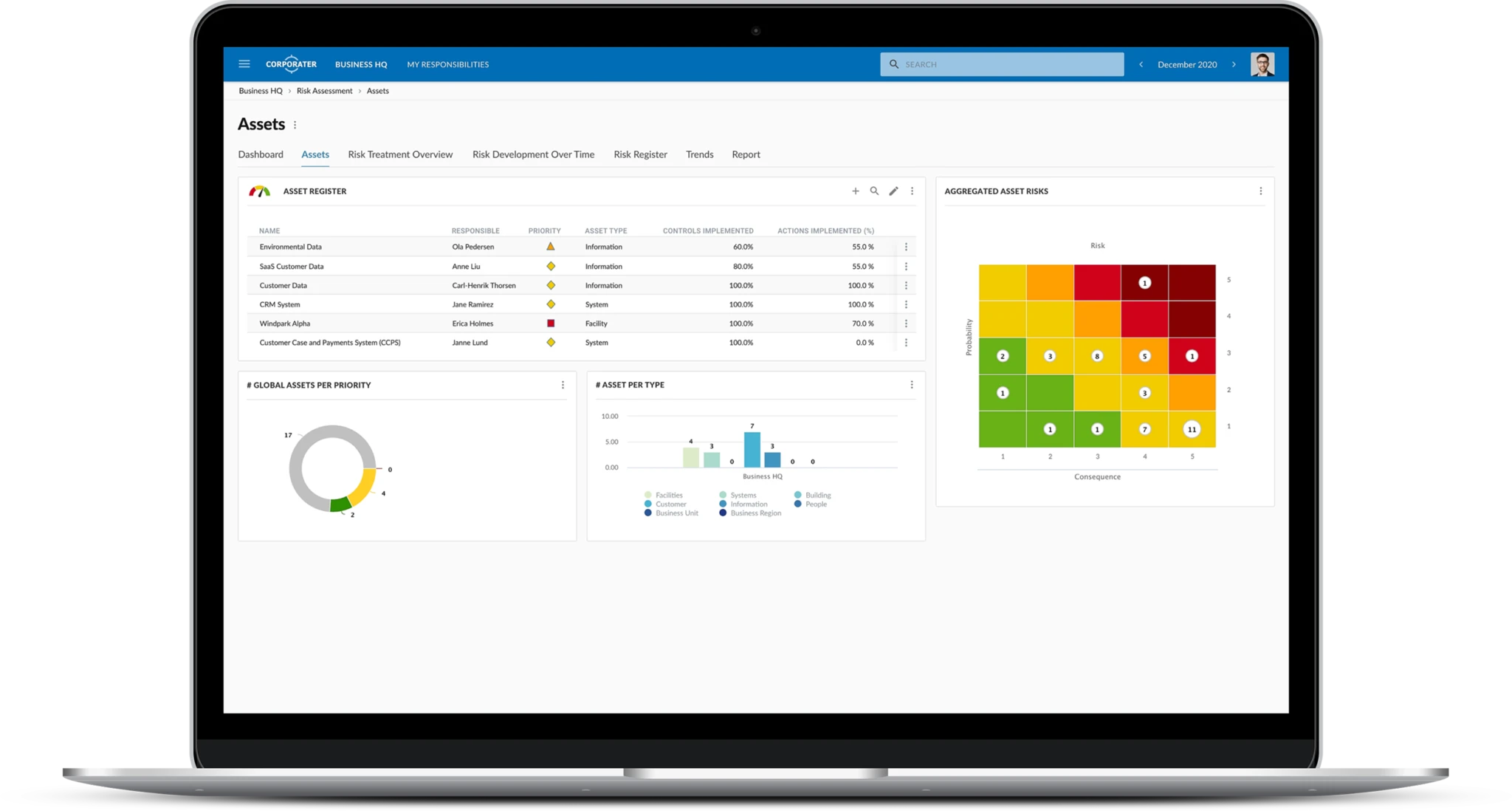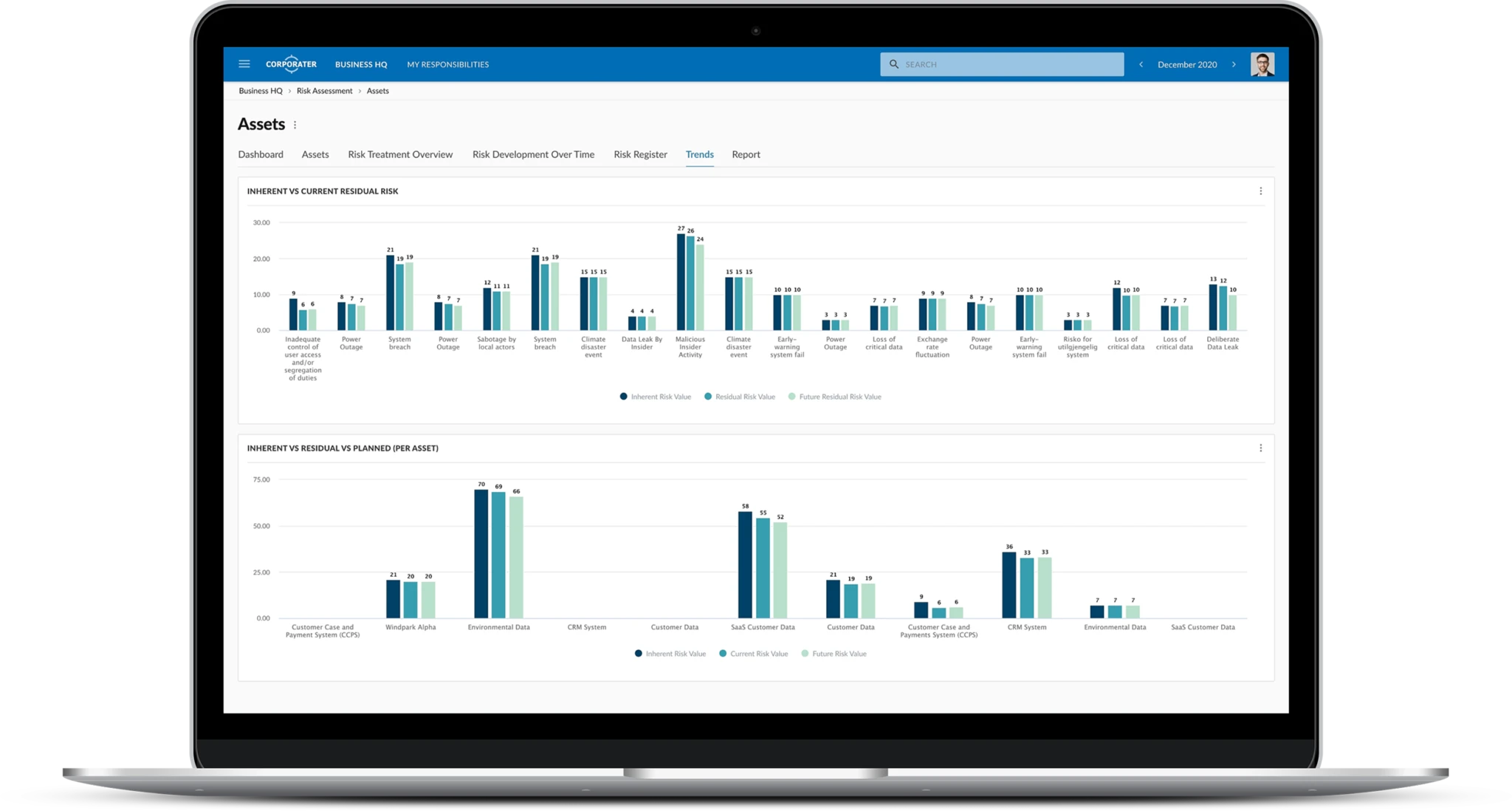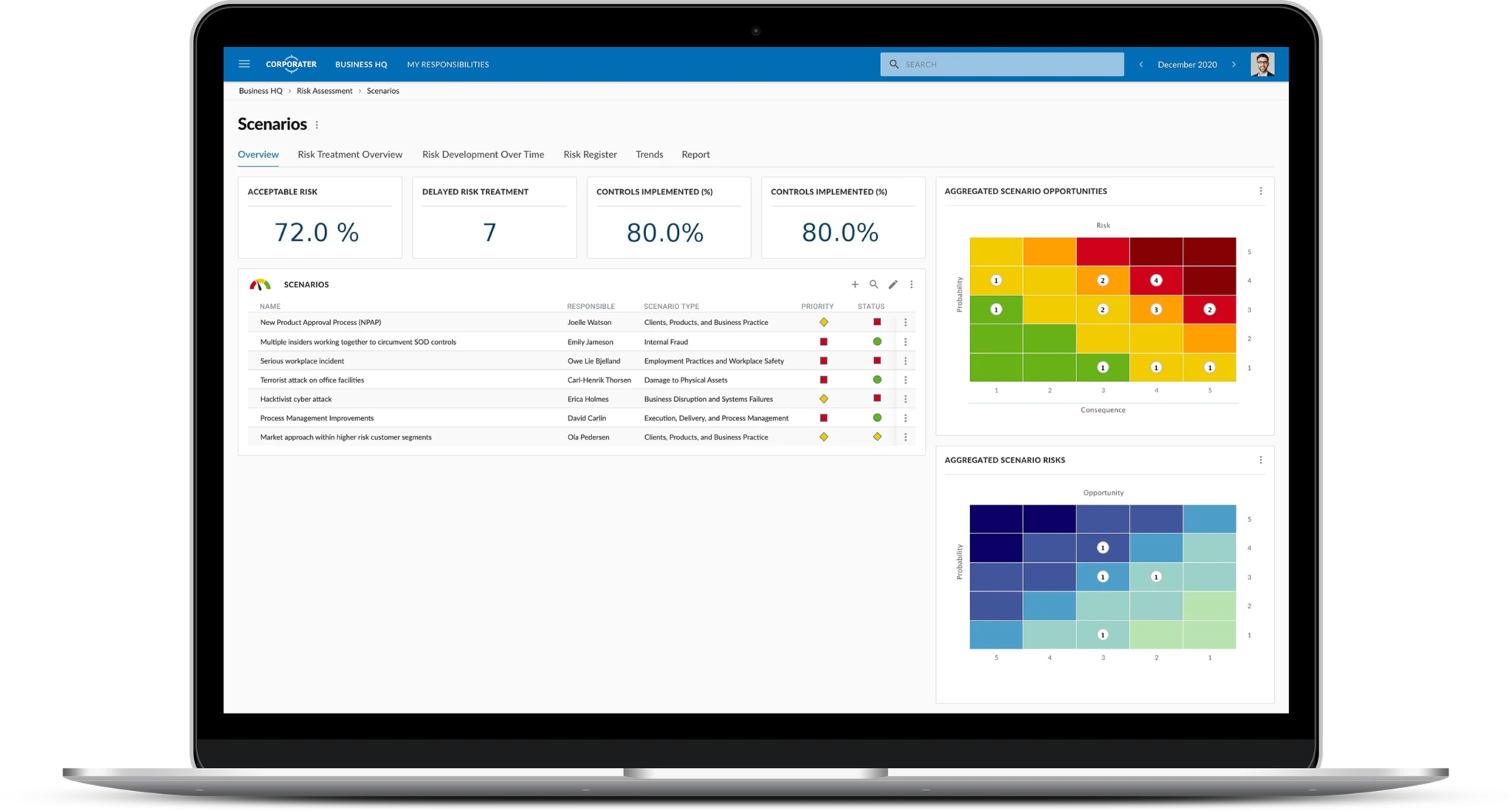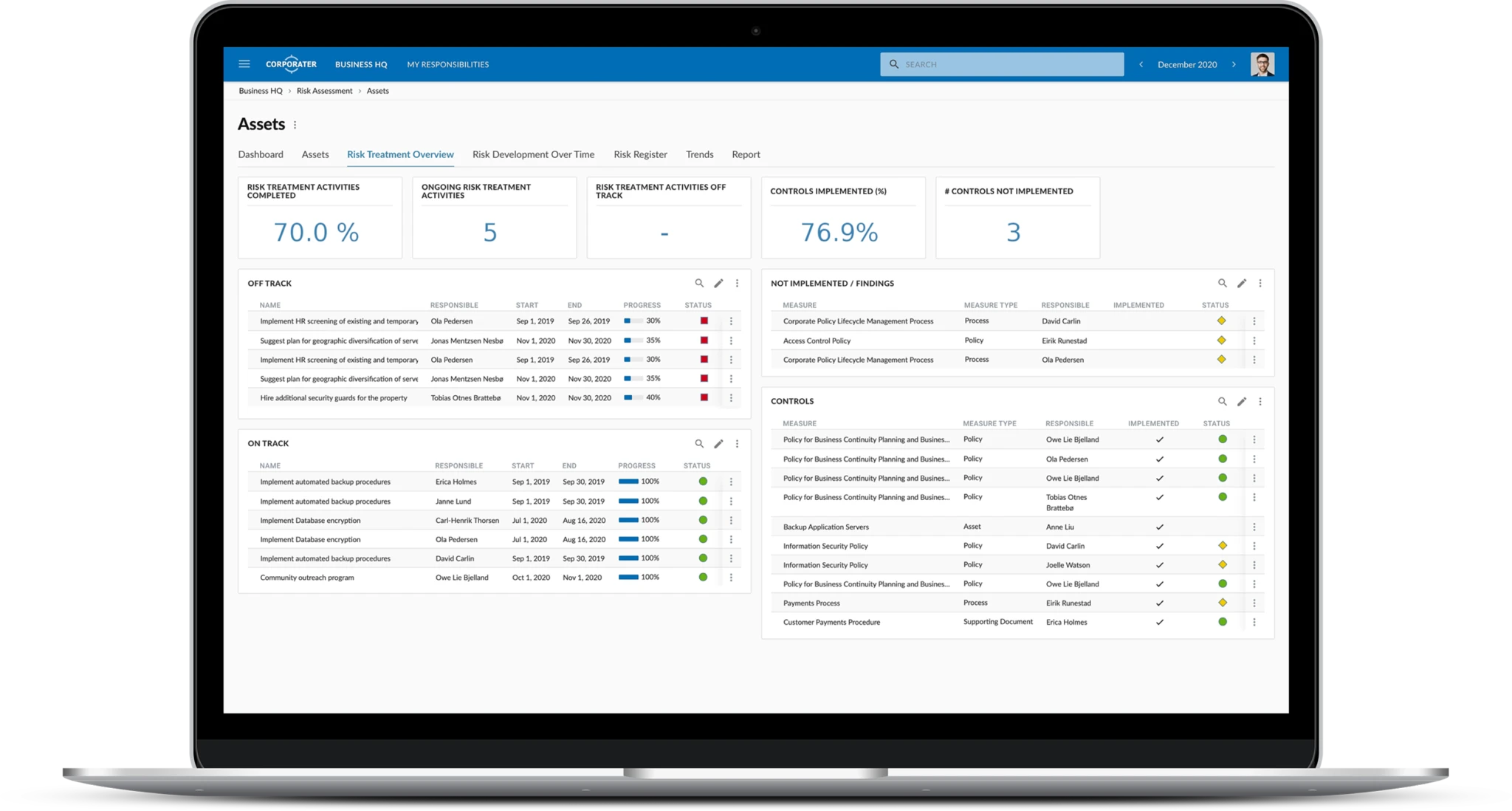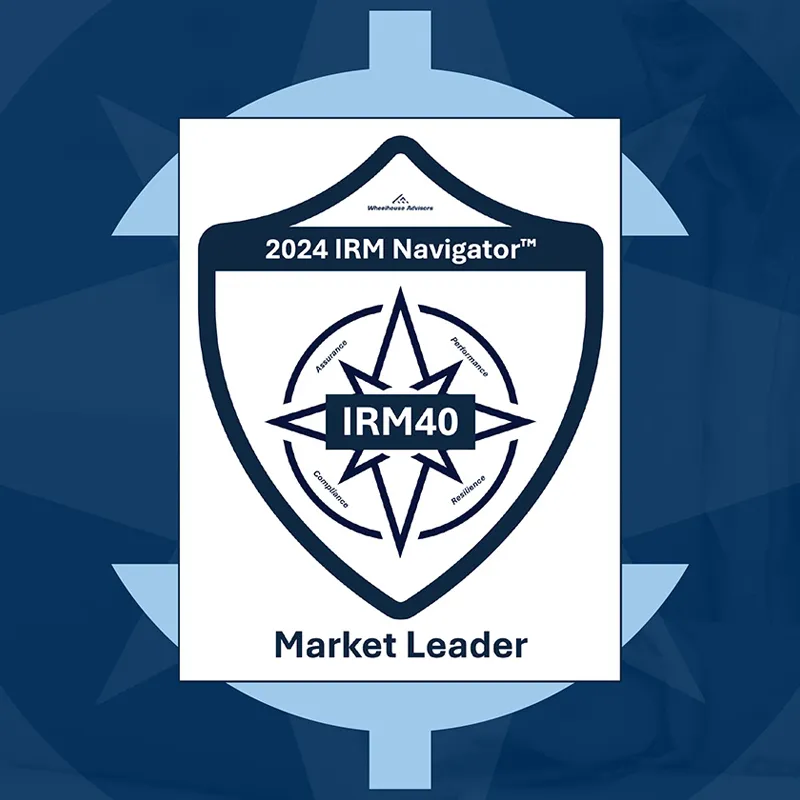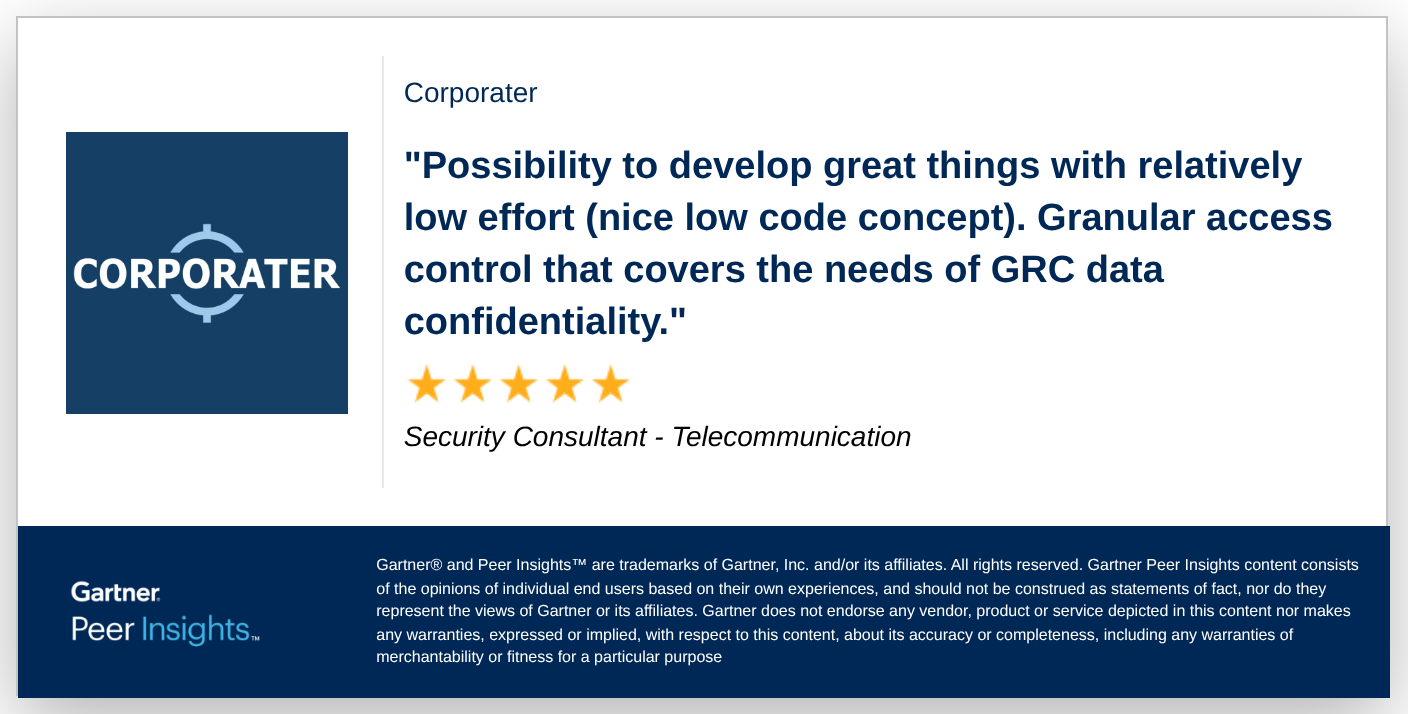TRUSTED. SECURE. SCALABLE.
Proactively Identify
and Manage Enterprise Risks
Corporater Business Management Platform
Trusted by Top Organizations
Corporater ERM Software
Corporater Risk Management software offers an integrated and holistic approach to digital and data-driven risk management to help organizations achieve a more realistic risk profile and better data for risk-based decision making and problem-solving. As a highly flexible solution, it can be used with a variety of frameworks, such as COSO, COBIT, NIST, HIPAA, PCI-DSS, HITRUST, or ISO risk frameworks, etc.
Key Benefits
Move to a collaborative, integrated environment that enables a unified risk register and bridges the communication gap.
Make faster and better decisions based on up-to-date, transparent, traceable, and systematic information visualizations.
Include all aspects of risks that may threaten your strategic objectives, including facets of business integrity.
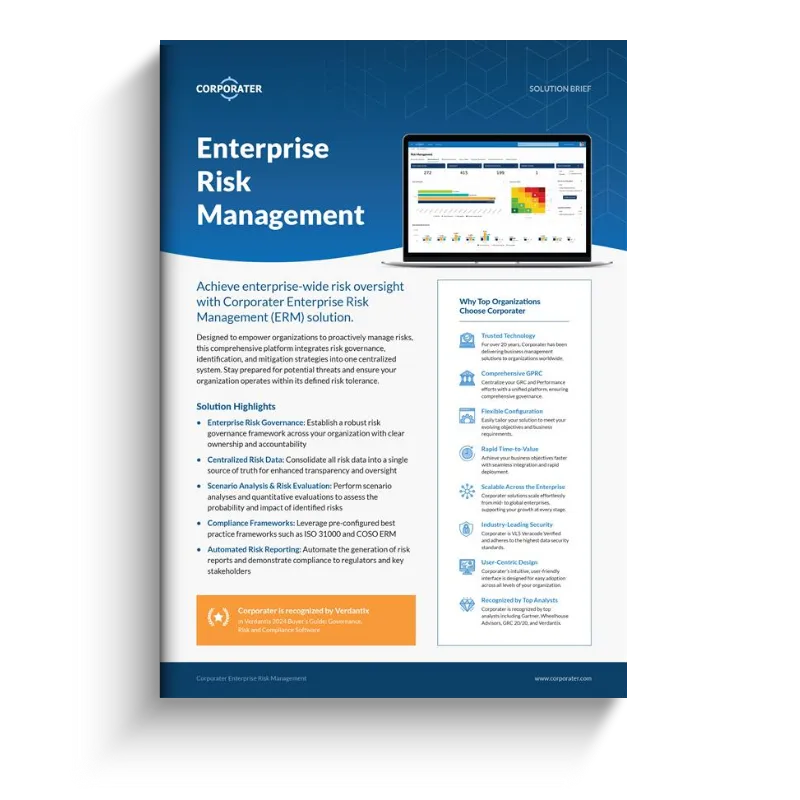
Download Corporater Enterprise Risk Management Solution Brief
Our solutions help consolidate all risk data into one central hub, monitor key risk indicators (KRIs) and risk exposure across multiple business units, conduct risk assessments, manage various types of risks, and report on risk mitigation controls measures.
Request Demo
Key Capabilities
Create a role-based risk dashboards to have a complete overview of risks, their potential impact, options for risk mitigation, and more.
Keep your organization prepared for the unexpected with Corporater risk planning and early risk identification.
Establish and automate incident management processes to minimize adverse impacts on your organization. Monitor, report, and resolve incidents.
Monitor, evaluate, treat, and report your risks. Corporater supports quantitative and qualitative risk assessments.
Build and maintain a centralized risk register (risk inventory) to have a complete and current overview of risks across your organization.
Generate custom risk reports and submit them through review/approval process. Include visual elements such as graphs and risk heat maps.
Govern the overall risk management program assurance. Have control over emerging risks, threats, and opportunities across your organization.
Conduct risk analysis and audits, assign risk ownership, and turn bad risks into opportunities.
Monitor identified, residual and secondary risks, send risk responses, and take corrective action. Measure the effectiveness of your response.

Client Insight
Recognized by Top Analyst Firms
What Our Customers Say
Hear directly from Corporater customers about their experience with our products, service quality, and support.
All reviews are verified on Gartner® Peer Insights™.
